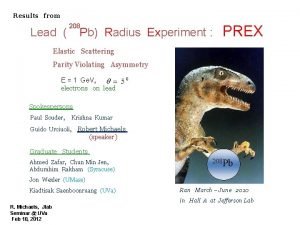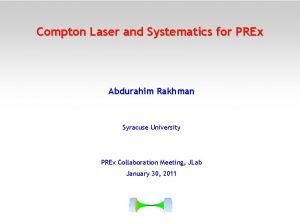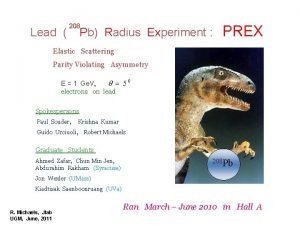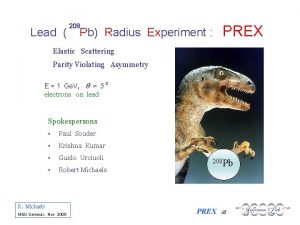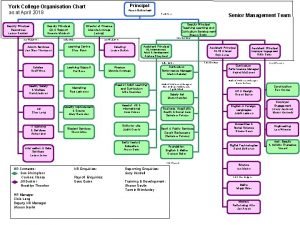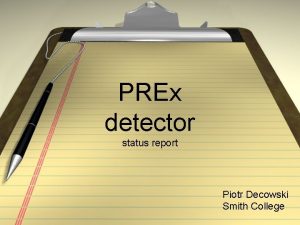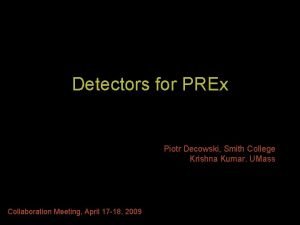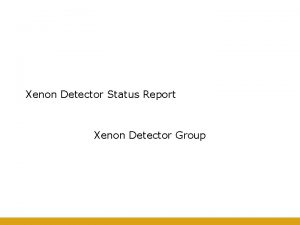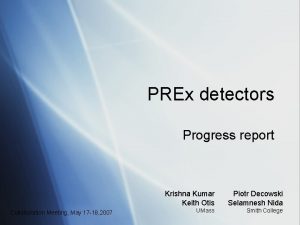PREx detector status report Piotr Decowski Smith College












- Slides: 12

PREx detector status report Piotr Decowski Smith College

HRS focal plane Keith Otis, UMass

Quartz stack Thin quartz Keith Otis, UMass

Requirements: 1. Integrating 2. Radiation hard (~1 GHz) 3. Good resolution (<25%) 4. Small size

Test bench for cosmic ray measurements Cosmic muon E>300 Me. V 5 cm Number of Cherenkov photons quartz block stack Quartz blocks Trigger scintillators light 300 Me. V 20 cm Cherenkov 5 blocks 3 blocks T PM 1 block trigger scintillators Pb 20 cm Muon energy (Ge. V)

Response of Hamamatsu R 329 -02 PMT to single photons at HV = +2000 V shutter LED power pulse PMT output +2000 V ADC gate PMT 1: 100 optical filter 29 channels 200 ns 1 k. Hz

Cosmic muons - measurements 1 block 5 cm*4 cm*0. 5 cm Number of channels per PE = 29 Measurement 5 blocks Measurement Channel # Simulations # of photons “Factor of 4” puzzle: Nph in simulations = NPE in measurements Channel # Simulations # of photons Measurement Simulations Black dots: Distr. of events vs (channel / number of channels per PE) (meas. ) Red dots: Distr. of events vs number of photons reaching PMT (simulations) Simulations reproduce well width of the experimental distributions

Simulations Distributions of Cherenkov photons generated in quartz blocks of different thicknesses: Number of photons and RMS vs block thickness N of photons RMS 11% 1 cm block RMS 39% 15 cm block Distribution of generated photons THINNER BETTER! Quartz block thickness (mm)


Do we need scanners? Examples of scans from HAPPEX II: Momentum axis James Barber, UMass Scanners are very useful for precise monitoring of electron flux distribution at the detector face. Good knowledge of this distribution is important for determination of the average Q 2 value (note that it is critical because of the small size of PREx detector)

Scans parametrized Logarithmic distribution fitted with polynomial a 0 a 1 a 2 Run number a 3 a 4 James Barber, UMass

Plans for the nearest future: 1. Optimization of quartz block size, and of 2. light collection using cosmic muon setup 2. Mechanical design and machining 1. of detector prototype 2. 3. Test of prototype using CEBAF electron 3. beam (summer 2007? )

